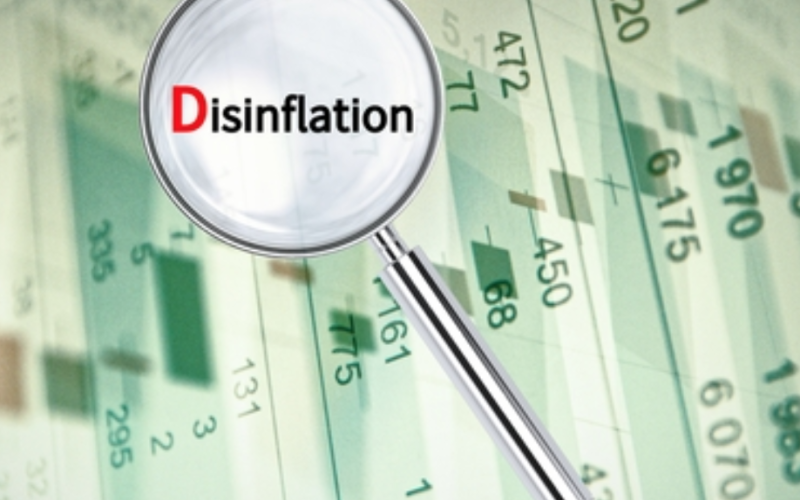by Niels Clemens Jensen, Absolute Return Partners
Inflation is when you pay fifteen dollars for the ten-dollar haircut you used to get for five dollars when you had hair.
– Sam Ewing
China in deflation
Over the next few pages, I will argue that consumer price inflation (CPI), which is now falling rapidly across the OECD, will soon return to levels that central bankers are comfortable with. I don’t expect the rate of inflation to return to 2% any time soon, but I suspect we will reach 3% relatively quickly, and that 3% will be enough to make central bankers start easing.
In China, the picture is very different. Chinese producer price inflation (PPI), which is a powerful leading indicator of CPI, turned negative more than 12 months ago and has been negative since. Chinese CPI has fallen dramatically as a result and has also turned negative more recently.
The fact that China is now struggling with deflation (again) raises loads of questions and is an important part of the puzzle, as China has been an exporter of deflation in recent years; however, space limits do not allow me to go into any level of detail on that topic today.
Before I move on, allow me to make one comment on China, though. The facts that China is a big exporter of deflation, and that Chinese inflation has turned negative again, will indeed provide a helping hand to central bankers in the OECD, keen to bring CPI in their own country/region further down.
Is it showtime for 60/40 portfolios?
Despite US equites, when measured more broadly, not enjoying the most glittering year last year, they still did fairly well. After all, as you can see in Exhibit 1 below, S&P 493 delivered a highly respectable +14%. However, as you can also see, the Magnificent 7 delivered no less than +76%.
As earnings grew less than equity prices last year, and as 2024 EPS estimates were lowered, P/E multiples increased as the year progressed with Q3 being the noticeable exception (Exhibit 2). However, as you can also see, on a market cap-weighted basis, US equities (as measured by S&P 500) are much more expensive than they are on an equal-weighted basis. This provides you with an important piece of information – that US equities, apart from megacaps, are not as expensive as generally perceived. In fact, they are priced more or less in line with long-term averages.

Source: Goldman Sachs Global Investment Research
Having said that, because most megacap stocks are now exceptionally expensive, and because the Magnificent 7 now account for nearly 30% of the S&P 500, the US stock market looks extraordinarily expensive. A recent study conducted by Goldman Sachs suggests that S&P 500 is presently in the 95th percentile valuation-wise, when one compares the current P/E multiple to multiples going all the way back to 1871.

Source: Goldman Sachs Global Investment Research
Given that I expect inflation to continue to moderate as we move further into 2024, I also expect bond yields to fall further. This begs an interesting question – could we be in for a good year for both bonds and equities, i.e. a win-win for 60/40 portfolios?
My preliminary answer is, as it always is, that it depends. In this case, it depends on the strength of the underlying economy. If a recession is around the corner, equity investors shouldn’t expect returns to be as robust as they were last year, but nor should they necessarily expect returns to be negative. In 16 of the 31 recessions since the Civil War, returns on US equities have been positive, i.e. negative returns are not a given, just because the economy is doing poorly.
If, on the other hand, we end up with a soft landing (which is my base case), then I would expect both bonds and equities to do relatively well, provided inflation continues to play ball. Let’s therefore spend two minutes on the inflation outlook.
A storm in a teacup
Much has been made of the shipping disruption, caused by the Houthi rebels’ repeated missile attacks on commercial ships passing through the Red Sea but, in reality, it smacks of a storm in a teacup. There can be no doubt that the cost of shipping between Asia and Europe is rising because of the sharp increase in insurance costs (Exhibit 3).

Source: www.drewry.co.uk
However, when you dig a bit deeper, it becomes obvious that the impact on inflation is marginal. The research team at Goldman Sachs have estimated the impact, using different methodologies and they conclude that, in all cases, the impact on CPI is less than 10 bps – hardly enough to cause sleepless nights (Exhibit 4).

Source: Goldman Sachs Global Investment Research
On that basis, I can only conclude that it will take a great deal more than the Houthi rebels in Yemen to change the overall direction of inflation, which continues to trend downward. Employment costs are finally coming under control again; mortgage costs have started to moderate, and shelter inflation is back to pre-pandemic levels. All in all, inflation conditions are a great deal more promising than they were at this time last year.
A final few words
Given that the decline in the rate of inflation across the OECD is more or less synchronised, you should expect most OECD central banks to begin to cut policy rates later this year. Furthermore, you should expect yields on longer-dated OECD bonds to fall in sympathy, and you should expect a fairly robust response from OECD equity markets, assuming a soft landing – at least in the US.
The main risks this year, I believe, are geopolitical in nature. An unpleasantly high number of troublemakers are in power or about to come into power around the world. Political stability is an important prerequisite for upbeat financial markets, and political stability is not what we enjoy most of these days.
We have a war on our hands in Ukraine, and we have another one in Gaza. Only days ago, Pakistan retaliated after an Iranian strike on Pakistani territory. Three US servicemen have just been killed in Jordan, and the conflict with the Houthis in Yemen is in danger of getting out of control. Even in the EU, we have a leader or two who have other things than stability on their minds.
How this is all going to end, I have no idea, but the trend is indeed worrisome. Despite all the human misery, the only good news, I suppose (if I can use the term “good” in this context), is that equity investors care little about human costs, as long as earnings are unaffected. And I see only a modest risk that any of these armed conflicts will impact G10 corporate earnings negatively in a major way.
Niels C. Jensen
1 February 2024
Copyright © Absolute Return Partners
















